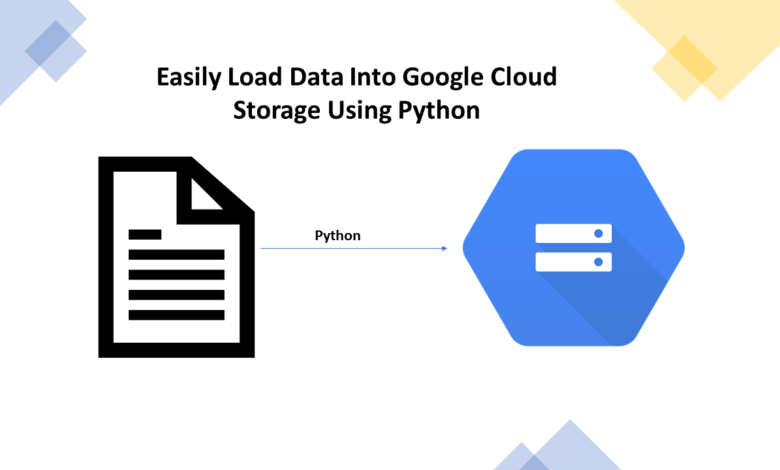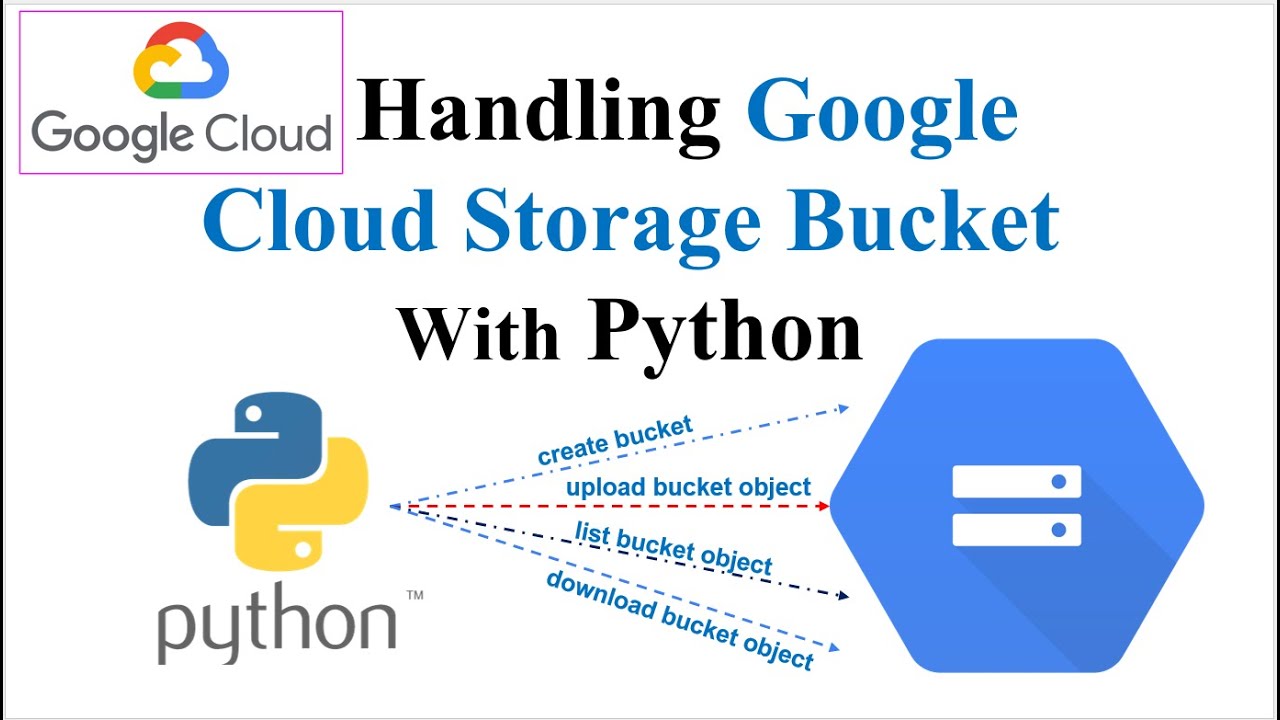Python Google Cloud Storage client
Python Google Cloud Storage client

Here's the lowdown on using the Python Google Cloud Storage (GCS) client:
Prerequisites
Install thegoogle-cloud-storage library by running: pip install google-cloud-storage Set up your GCS project and enable the Cloud Storage API.
Authenticating with GCS
To interact with GCS, you'll need to authenticate using credentials or a service account. Here are two common methods:
Using environment variables: Set theGOOGLE_APPLICATION_CREDENTIALS environment variable to point to your JSON key file.
import os
from google.cloud import storage
Set the environment variable
os.environ["GOOGLE_APPLICATION_CREDENTIALS"] = "/path/to/your/keyfile.json"
Create a client instance
storage_client = storage.Client()
GOOGLE_APPLICATION_CREDENTIALS environment variable to point to this file.
Basic Operations
Here are some basic operations you can perform using the GCS client:
Listing Buckets: Get a list of buckets in your project:buckets = storage_client.list_buckets()
for bucket in buckets:
print(bucket.name)
bucket_name = "my-new-bucket"
storage_client.create_bucket(bucket_name)
bucket_name = "my-existing-bucket"
file_path = "/path/to/your/local/file.txt"
blob = storage.Blob.from_string(file_path)
blob.upload_to(bucket_name, file_path)
bucket_name = "my-existing-bucket"
file_name = "file.txt"
blob = storage.Blob(bucket_name, file_name)
data = blob.download_as_bytes()
bucket_name = "my-existing-bucket"
storage_client.delete_bucket(bucket_name)
file_name = "file.txt"
blob = storage.Blob(bucket_name, file_name)
blob.delete()
These are just some basic examples of what you can do with the GCS client using Python. For more advanced operations and customization options, be sure to check out the official Google Cloud Storage documentation: https://cloud.google.com/docs/python
Remember, always keep your credentials and key files secure!
Python Google Cloud Storage documentation

Here's the Python Google Cloud Storage documentation:
Overview

Google Cloud Storage is a cloud-based object store that enables you to store and serve large amounts of data, such as images, videos, and text files, over the web. You can use the Cloud Storage client library for Python to interact with your buckets and objects.

Setting Up
Before you start using the Cloud Storage client library for Python, make sure you have:
A Google Cloud account: Sign up for a Google Cloud account if you haven't already. Enabled the Cloud Storage service: In the Google Cloud Console, navigate to the Navigation menu and click on "IAM & Admin" > "Services" and ensure that Cloud Storage is enabled. Set up your credentials: You need to set up credentials to authenticate with Cloud Storage. This can be done using thegcloud auth command or by setting the GOOGLE_APPLICATION_CREDENTIALS environment variable.
Client Library
The Cloud Storage client library for Python is available on PyPI (Python Package Index) and can be installed using pip:
pip install google-cloud-storage
Once you have the client library installed, you can use it to interact with your buckets and objects.
Here are some examples of what you can do with the client library:
Creating a BucketTo create a new bucket, you can use the create_bucket method:
from google.cloud import storage
storage_client = storage.Client()
bucket = storage_client.create_bucket('my-new-bucket')
print(bucket.name)
This will create a new bucket named "my-new-bucket" and print its name to the console.
Uploading an ObjectTo upload a file to a bucket, you can use the upload_blob method:
from google.cloud import storage
storage_client = storage.Client()
bucket = storage_client.bucket('my-bucket')
blob = bucket.blob('path/to/file.txt')
blob.upload_from_string('Hello, world!')
print(blob.public_url)
This will upload a file named "file.txt" to the bucket and print its public URL to the console.
Downloading an ObjectTo download a file from a bucket, you can use the download_as_bytes method:
from google.cloud import storage
storage_client = storage.Client()
bucket = storage_client.bucket('my-bucket')
blob = bucket.blob('path/to/file.txt')
data = blob.download_as_bytes()
print(data.decode('utf-8'))
This will download the file and print its contents to the console.
Listing Buckets and ObjectsTo list the buckets and objects in a project, you can use the list_buckets and list_blobs methods:
from google.cloud import storage
storage_client = storage.Client()
buckets = storage_client.list_buckets()
for bucket in buckets:
print(bucket.name)
blobs = bucket.list_blobs()
for blob in blobs:
print(blob.name)
This will list all the buckets and objects in the project.
These are just a few examples of what you can do with the Cloud Storage client library for Python. For more information, see the Cloud Storage documentation.
I hope this helps! Let me know if you have any questions or need further clarification.





























